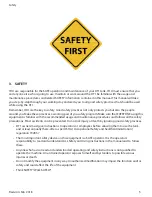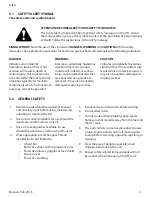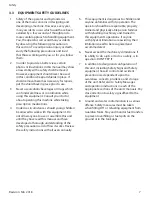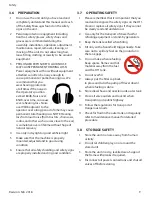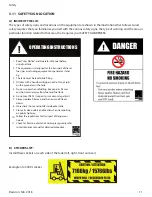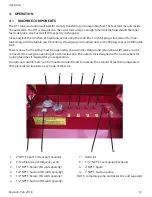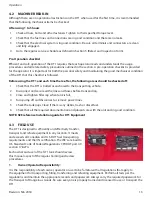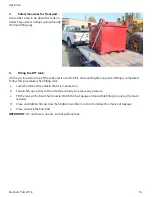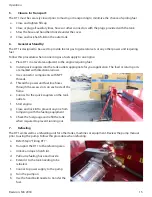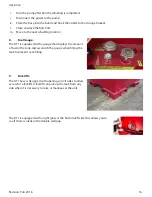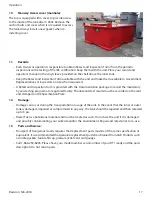
Operation
Revision: Feb 2018
19
c.
Weekly and Before Transporting:
• Visually check the tank gaps to verify that there have been no leaks from the primary tank or any spills
during fuel transfers. If it has any sludge or liquid in it, pump it into an approved container, seal it and
dispose of it in accordance with local regulations. Do not pour on the ground or in drains.
• If severe sludge or trash formed in the tank gaps, it is recommended that the inner tank be removed
and the outer tank be completely washed out. Do not take chances with contaminating the workplace
or the environment.
d.
Monthly:
• Lubricate the door hinge and lock.
• Clean out pump and line filters including strainer.
• Visually check tank, hoses, pump and other components for cracks, corrosion and leakage.
• Correct all deficiencies before starting. Stop leaks. Make repairs using only genuine replacement parts
or their equivalent.
e.
Mandatory 5 year Testing at a Registered Facility:
The transport of Dangerous Goods requires IBC’s to be leak proof tested and inspected internally and
externally at a Government Registered Facility with the results being recorded on the Record Card and the
date Stamped on the Specification Plate.
16.
Preparation for 5 year testing:
Cleaning-prior to being leak tested or inspected, the IBC shall be:
a. Thoroughly drained of all previous ladings.
b. Interior washed to remove previous ladings.
c. Interior rinsed to remove liquids.
d. Exterior washed to remove previous ladings, foreign material, labels and adhesives from all exterior
components of the IBC.
The DT1 is manufactured so that it is easy to dismantle for cleaning, servicing, repairs, and inspections.
Empty the tank, and follow instructions outlined on the following page.

